|
Turkey Vulture Cathartes aura
Brazilian name: urubu-de-cabeça-vermelha
Chilean name: Jote de cabeza colorado
|
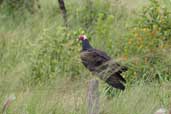 |
The Turkey Vulture is found from southern Canada to Tierra del Fuego. It is found in a wide variety of habitats from desert to tropical rain
forest.
It has a highly developed sense of smell which allows it to find the carrion which is the main part of its diet. Black Vultures (Coragyps atratus) and
King Vultures (Sarcoramphus papa) which cannot smell, watch where the Turkey Vultures descend.
|
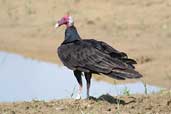 |
Turkey Vultures can be confused with Greater and Lesser Yellow-headed Vultures. If you get a close enough view and if you are in South America
other than the Pacific coast, the identity can be resolved by looking at the nape which has a whitish band in the subspecies C.
a. ruficollis as can be seen in the first two photos.
The 5th photo, taken in Cuba, shows the nominate sub-species while the photos 6, 9, 10 and 11 were taken in Chile and show the sub-species C. a. jota.
The 7th photo shows what happens when you hang around the rubbish dump in an iron ore mine.
|
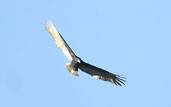 |
In flight the underwings are similar to a Lesser Yellow-headed Vulture with a contrast between the black wing coverts and the silvery flight feathers. The Turkey Vulture holds its wings well above the
horizontal, and tilts unevenly from side to side rather than flapping.
There are illustrations in Ridgely
& Greenfield, Plate 9; HBW, Volume 2, Pages 25, 27, 30 and 39; and Sick, Plate 6.
|
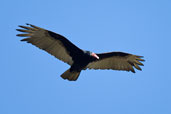 |
There is a recording and a distribution map on xeno-canto. |
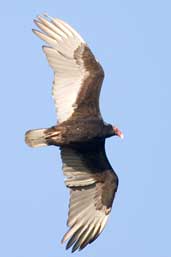 |
|
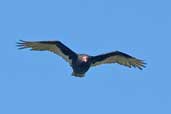 |
|
 |
|
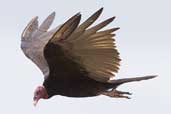 |
|
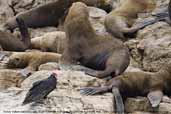 |
|
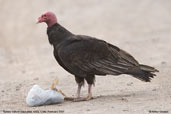 |
|
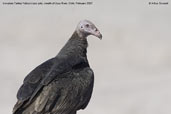 |
|
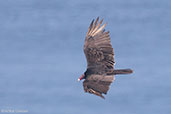 |
|
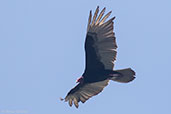 |
|
|
|












